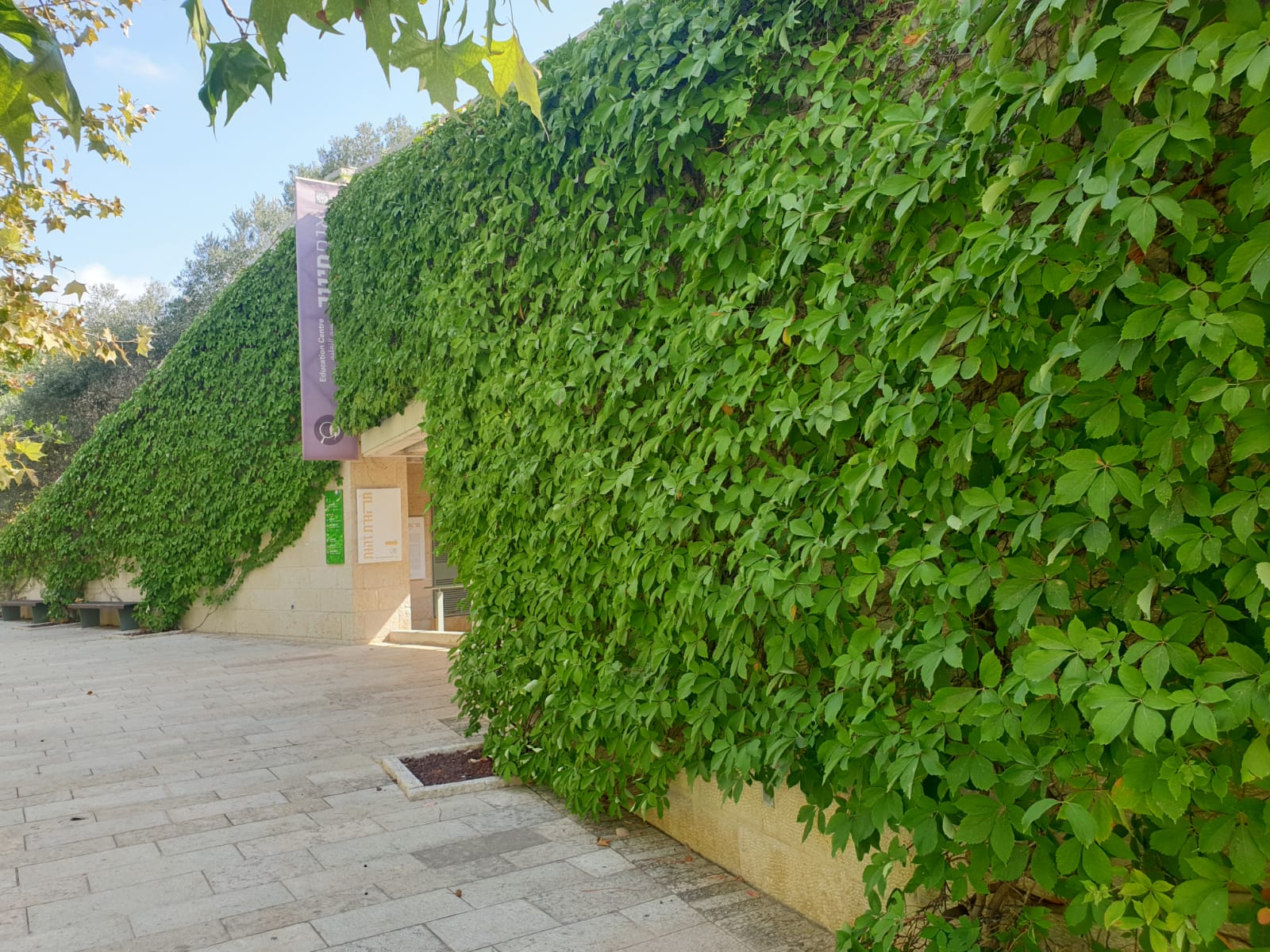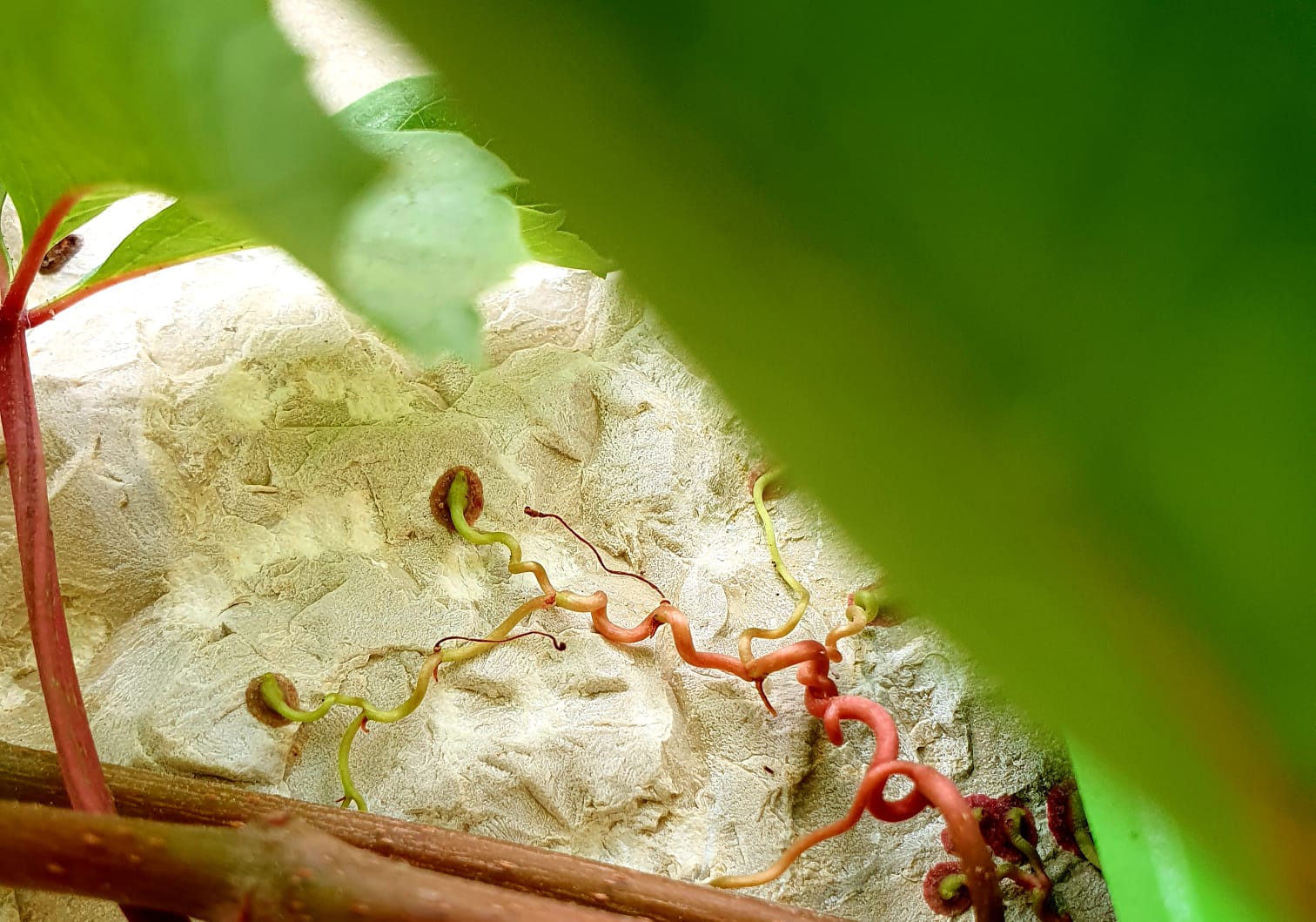The Art of Natural Climbing
Climbers are nature’s ‘carpets’ – a natural art founded on great wisdom. Have you ever asked yourself how they know how to climb? Come and take a closer look and get a few tips
 News and Events
News and Events
Climbers are nature’s ‘carpets’ – a natural art founded on great wisdom. Have you ever asked yourself how they know how to climb? Come and take a closer look and get a few tips

If you look at both sides of the approach to the main entrance gate to Ramat Hanadiv, you’ll see a green, living wall – Ficus pumila (climbing fig). Nearby, you’ll meet Parthenocissus quinquefolia (five-leaved ivy) climbing along the walls of the Visitors Pavilion next to the InfoShop; towards winter its leaves become red and give it a unique, spectacular look. In the fragrance garden during spring and summer, Combretum indicum (Chinese honeysuckle) flowers in a changing show of white, pink and red.
What these plants share in common is that in contrast to trees and shrubs, which grow upwards, they have their own wonderful mechanism that enables them to grip nearby surfaces – each plant with its own method – and climb not only upwards but also sideways. All they need is a fence, a wall or a post, and they do the rest of the work by themselves.
How does a climber climb?
In contrast to trees, which have a solid, strong trunk that supports the tree’s canopy, climbers climb using the principles of gripping or wrapping. Ivy (Hedera) and five-leaved ivy, for example, climb on walls, fences or tree trunks

using gripping roots that develop from their stem. At the ends of the gripping roots are sticky pads. Other climbers, such as Chinese honeysuckle, wrap their main stem around posts or trees. Climbers such as grapes and peas use a tendril – a kind of arm that grows out of the stem; when it encounters something to grasp it twists up, wraps itself around it and pulls the plant upwards by means of touch sensors that signal to it to lengthen.
Wall, fence or post?
If you’re set on growing one of these wonderful plants, we’re happy to give you a few tips, from Lior Hershkowitz, the curator of our gardens:
In the gardening courses that are run from time to time at Ramat Hanadiv, we learn more about these wonderful climbers and about many other types of plants. If you want to enjoy them in your garden, you’re welcome to sign up.
For details about the courses: [email protected]
Did you like it? Join our free mailing list to receive monthly news and updates about activities for the whole family. Register here.
Any question? We will be glad to help